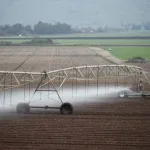Jerusalem, 28 July, 2025 (TPS-IL) — Israeli scientists have breathed new life into 80-year-old fungi, uncovering how decades of industrial farming have changed plant diseases—and revealing new opportunities for building more sustainable agriculture.
Researchers at the Hebrew University of Jerusalem, working in collaboration with counterparts at tel aviv University, Ben-Gurion University, and the Ministry of Agriculture, revived fungal samples of Botrytis cinerea, a major plant pathogen responsible for gray mold in over 200 crops. The fungi had been stored in the university’s National Natural History Collection since the early 1940s, long before the rise of synthetic pesticides and fertilizers.
The scientists, led by Dr. Dagan Sade under the supervision of Professor Gila Kahila, compared these historical strains to modern ones using genome sequencing and chemical analysis. What they found surprised them: the old fungi were genetically and biologically different from their modern counterparts. Most notably, they showed little to no resistance to fungicides, were less aggressive in how they infected plants, and were adapted to a wider range of environmental conditions.
“These fungi have been quietly evolving in response to everything we’ve done in agriculture over the past 80 years,” the researchers said in a statement. “By comparing ancient and modern strains, we can measure the biological cost of human intervention—and learn how to do better.”
The findings were published in the peer-reviewed iScience journal.
The core discovery is that today’s farming methods — especially the heavy use of chemical treatments — have reshaped the behavior and biology of crop diseases. Modern fungi have become more resistant to fungicides and more specialized in attacking certain plants. In contrast, the older strains were more general in behavior and showed fewer signs of chemical adaptation.
This difference matters. By studying what these pathogens looked like before modern agriculture, scientists can better understand how diseases develop resistance and how to slow or prevent it. That could lead to smarter, more targeted disease management strategies that don’t rely as heavily on chemicals.
“These findings give us a kind of ‘before and after’ picture,” the researchers said. “It helps us design crop protection tools that are more sustainable and less likely to trigger resistance.”
The practical applications are broad. Understanding how pathogens evolved in response to farming practices can guide the development of new fungicides, planting methods, or crop rotations that work with nature rather than against it.
The findings can inform the design of new fungicides that target weaknesses in pathogens that haven’t yet evolved resistance while being used strategically to delay resistance buildup. The study also stands to improve early warning systems and risk assessment tools for plant disease outbreaks. And by understanding how pathogens behaved before chemicals dominated agriculture, researchers can help organic and low-input farms develop alternative defenses rooted in environmental adaptation rather than chemical suppression.
“This work is a perfect example of how past and future can intersect through science,” the researchers said. “We brought something back to life not for nostalgia, but to help build a more sustainable agricultural system.”




























